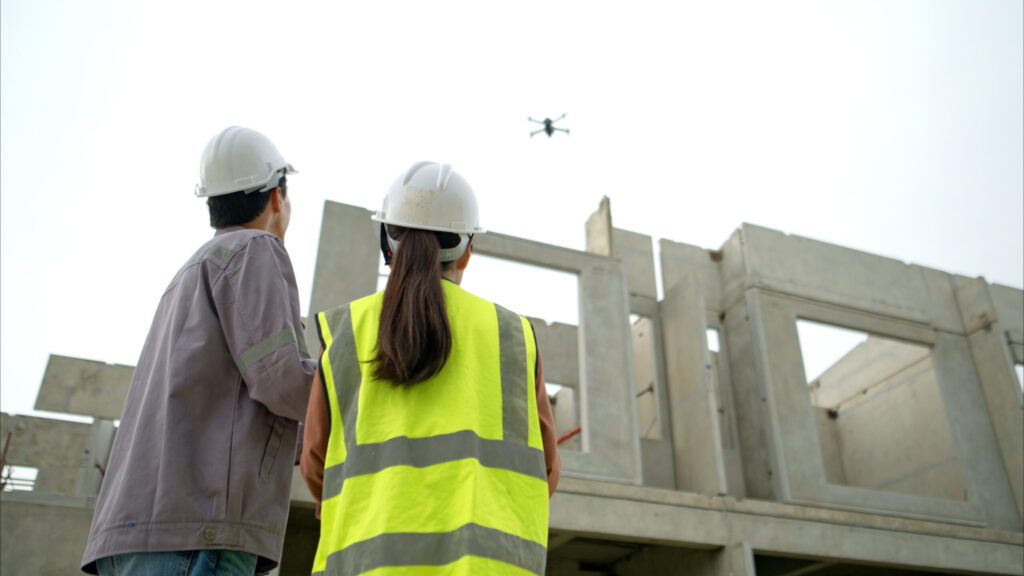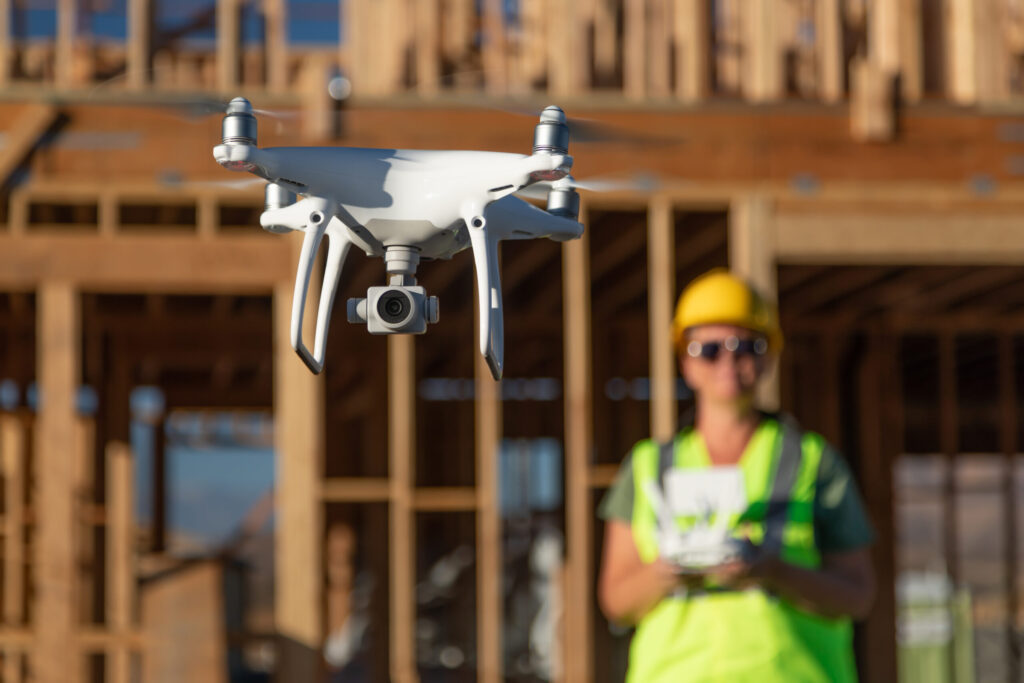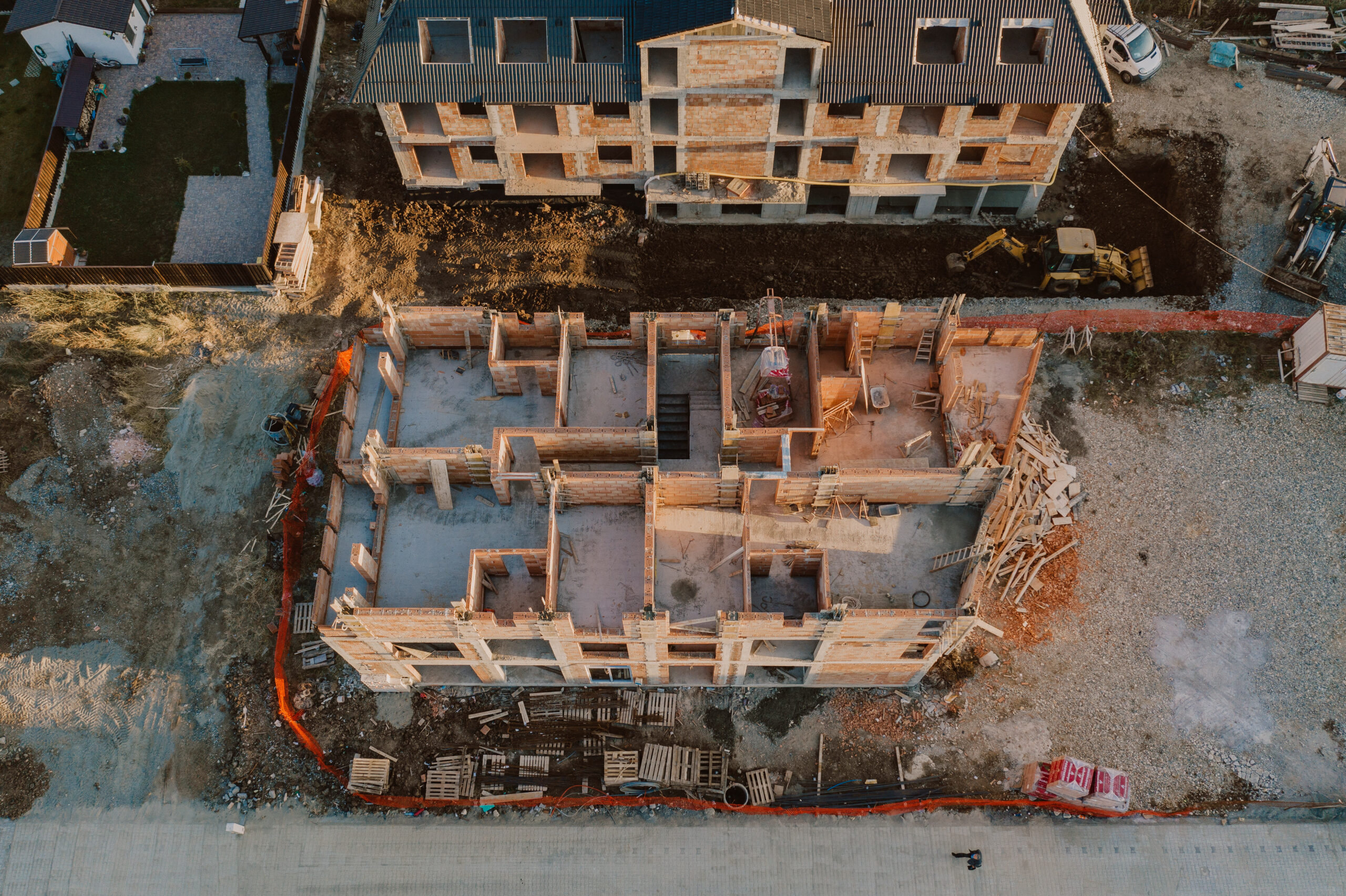Building inspection drones are now one of the most useful tools for checking roofs, chimneys, walls, gutters and hard-to-reach areas of a property. If you are a property owner, you might be wondering whether drones are just a trend, or something worth investing in or hiring for your next survey.
This article gives you everything you need to know about using building inspection drones instead of doing inspections the old-fashioned way. We will look at how drones work on building sites, what manual surveys still do well, and when a drone gives better results. If you are searching for answers like “should I use drones for inspections” or “are drones better than surveyors with ladders,” you will get your answer here.
Many people don’t realise that a drone can do a full building inspection without anyone having to leave the ground. It means no scaffolding, no cherry pickers, no ladders, and no risk of someone slipping off a roof. For property owners who care about safety, cost and fast results, this is a big deal.
You will also learn how drones give better images, reach tight spaces, and collect useful data for reports. Even if you still prefer traditional inspections, it helps to know what drones can do so you can make the best choice.
The Rise Of Building Inspection Drones In Property Surveys
It was not long ago that building inspections meant ladders, scaffolding and hours of slow work. Surveyors had to climb up, look closely with their own eyes and take photos where possible. But now, drones for building inspection are changing how this job is done.
Drones became popular first in photography, then farming and security. Before long, people saw how useful they were for property surveys. Instead of putting workers at risk, a small flying machine with a high-quality camera could scan a roof in minutes. This opened up a whole new way of working for surveyors, property owners and insurers.
One of the biggest reasons drones became trusted in this field is safety. Roofs, chimneys and other tall areas are dangerous to inspect. Using a drone means no one has to climb. It is safer, quicker and does not require scaffolding or special gear. This makes it ideal for home surveys, commercial buildings and large sites.
Drones also make it easier to spot problems. A clear aerial photo or video can show cracks, leaks or broken tiles without missing a detail. Some drones also carry thermal cameras, helping detect heat loss or hidden damp. With the right drone, the images can be recorded and used for full reports or insurance claims.
Another reason for their rise is cost. Hiring a drone team often works out cheaper than setting up ladders, safety rails and equipment. Jobs that used to take a whole day can now be done in one hour.
Building inspection drones are now a trusted part of surveys across the UK. From small homes to schools and warehouses, drones offer a smarter way to check buildings without risk, fuss or long delays.

Manual Inspections: What They Offer And Where They Fall Short
Manual building inspections have been used for many years. They often involve a surveyor climbing ladders or scaffolding to look at parts of a building by eye. This method is still trusted by many, especially when close contact is needed to tap bricks, check damp patches or look at the surface of materials.
For smaller buildings or simple issues, manual work can be helpful. It gives the inspector a chance to see things up close and feel them if needed. Sometimes this is useful when a report needs to include signs of wear or damage that are hard to spot in photos.
Manual inspections are also useful in areas where flying drones is restricted, such as near airports or certain types of government buildings. In those cases, having a person on-site is still the best option.
But manual inspections also have limits. Reaching the roof of a tall building, a church tower or factory unit often takes time, money and planning. Scaffolding or a cherry picker might be needed. This slows things down and can cost a lot more.
There is also a safety issue. Climbing up onto buildings or walking across uneven roofs puts people at risk. Even with helmets and safety ropes, accidents can still happen. For this reason, many businesses now look for safer options when checking buildings.
Another downside is that manual inspections can miss things. A person can only see from where they are standing. If they cannot reach a corner or roof ridge, it might go unchecked. If a building needs to be inspected more than once, this can lead to delays and extra cost.
This is where drones for building inspection often win. While manual methods still have their place, they are not always the best choice, especially for bigger or more complex jobs. Drones offer more speed, less risk and wider views of the whole structure.
Where Building Inspection Drones Outperform Traditional Methods
When it comes to inspecting buildings, time, safety and accuracy matter. That is where drones for building inspection start to show real value. They are faster, safer, and can give better views of hard-to-reach places than most manual methods ever could.
One of the biggest benefits of drones is how quickly they can get the job done. While a traditional survey may take hours or even days to complete, a drone can scan large buildings in minutes. There is no need to set up scaffolding or lifts, which means there is less waiting around before the work can start.
Drones can also get into places where people cannot. Roofs, chimneys, gutters and building edges are easy for drones to reach, even if they are very high up or awkwardly placed. This means nothing gets missed. A full view from every angle gives better reports and better decisions.
Safety is another big reason people turn to drones. Manual inspections can be risky, especially when ladders or tall buildings are involved. Drones remove the need to put people in harm’s way. That alone makes them a smarter choice for many property owners and building managers.
Another key area where drones win is in cost. There are no scaffolding hire fees, no long team days on site, and no delays from weather stopping high-up work. With fewer people needed and less equipment used, the overall price of a drone survey is often much lower.
When using building inspection drones, you also get repeatable results. This is very useful if you need to check a site more than once over time. Drone footage and photos can be compared easily from one visit to the next, helping track changes or spot new issues.
Drones also collect digital data that can be stored, shared and used in planning or insurance claims. This makes future work easier and reduces the chance of something being overlooked.
Overall, building inspection drones are not just new tech – they are a better way of doing a job that has stayed the same for too long.

Choosing Between Drones For Building Inspection Or Manual Survey
If you are trying to decide between drones for building inspection or the usual manual way, the best choice often depends on what the job needs and how fast you want it done. Both options have their uses, but one may suit your project more than the other.
Manual inspections are the method most people know. They involve surveyors climbing ladders, using scaffolding or cherry pickers, and checking the building by eye. This might be needed for close-up checks where touching or testing materials is part of the process. Some issues, like damp patches inside walls, might still need in-person checks.
But drones for building inspection are becoming the go-to choice for a good reason. They can quickly scan roofs, towers, or tall structures that would take hours to reach manually. If your building is large, difficult to access, or you need fast results, drones are likely the better fit.
Another thing to think about is cost. Manual surveys can end up expensive, especially if scaffolding or powered lifts are needed. Drones reduce this cost by removing the need for extra equipment and saving time on the ground.
Then there is safety. If your building is high or damaged, keeping people off it makes sense. Using a drone avoids putting anyone at risk and still gets the job done to a high standard.
The choice might also come down to your end goal. If you need a quick look before buying a property, or want to check storm damage, a drone might be enough. But if you need hands-on tests, or are working with very old buildings, manual could still be the better route.
Many people now use both options together. A drone does the first look, and then a manual follow-up can focus only on any clear problems. This cuts time and cost while keeping quality high.
If you are unsure, speak to a drone service provider. They can tell you if your site is right for a drone or if it needs extra care. Making the right choice saves time, money and stress.
Let’s Help You Make The Right Choice Today
We understand how important it is to choose the right method when it comes to checking your building. Whether you are a homeowner, a property developer, or part of a facilities team, time, safety, and cost all play a part in your decision. That is exactly why we believe building inspection drones are one of the smartest choices you can make.
At The Drone Ranger, we have worked with many property owners who wanted fast, clear answers without taking risks. Our drones for building inspection give you a safe way to see everything you need — even areas that are hard to reach — without lifting a ladder or paying for scaffolding.
We are proud to offer a solution that is both high quality and flexible. Not everyone wants to buy a drone or learn how to fly one. That is why we offer professional drone inspection services across the UK. Whether it is a one-off survey or a regular check-up, we have a team ready to help.
If buying is not in your budget right now, renting from us is a great way to still get the benefits. Our team takes care of the flying, recording, and reporting, so you get all the insights without the extra hassle.
So, if you are looking for a better way to manage your property checks, we are here to help. Let us show you how easy it can be to inspect safely, save time, and make better choices with drone technology. Call The Drone Ranger today and let’s get your building inspection sorted — the right way.
Share This Story, Choose Your Platform!


